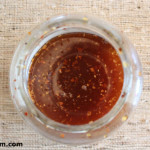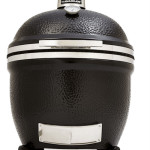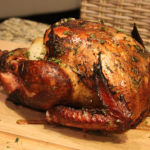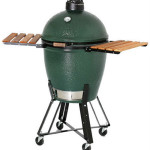While I love adding some delicious sauces to my barbecued dishes, there is absolutely nothing that beats a good dry rub. Unlike sauces, dry rubs aren’t usually all that messy and they can really add an explosion of flavor and a fantastic texture that sauces simply can’t emulate.
Once you’ve started mixing your own rubs, you’ll find that there is a ridiculous amount of combinations available for all kinds of meat. Sure, you could use one of these six DIY rubs, or even a prepackaged rub. But the whole point of grilling is the experimentation and putting YOUR name on it, right? And that starts with creating your own dry rub.
While obviously I can’t give you a signature dry rub, here are some basics of mixing your own delicious dry rub that will have the neighbors and family begging for your super secret recipe!
1. Salts and Sugars
Not all dry rubs have salt or sugar in them, but many do as both are a good base to start with. Most recipes call for 4 Tablespoons of salt or sugar (usually brown) and then build from there. Here are some things to consider:
- Generally speaking, you’ll want to avoid salt in pork (as it is naturally more salty).
- Sea salt/regular salt is more fine graned than kosher
- Seasoned salt often features things like garlic salt, onion salt, and celery salt, so account for that when using it
- White sugar will scorch at higher temperatures, but brown sugar will caramelize and compliments most sauces well.
2. Pepper
From the various peppers will come the heat in your dry rub. It’s important to balance the salt and spice in your dry rub. Make sure you add in small increments until you get the right ratio, especially if you’re using hotter chile peppers.
- Black pepper has a very strong and powerful flavor (I would even say harsh) taste, whereas white pepper has a more gentle heat and a subtle warmth
- Cayenne pepper (or ground red pepper) is very hot and provides instant front-end heat that does not linger
- Chile pepper (not chili powder) comes in a variety of heat from mild to hot; many of these do have a heat that lingers
3. Transition Spices
These spices sort of fill in the gap between your sugar and spice. Some rubs which omit sugars will instead use more of one of these spices in order to help balance out the peppers and other spices. You don’t have to be quite as careful with these spices as you do with the peppers.
- Paprika is by far the most common transition spice as it has a sort of mild, hearty flavor that easily carries both sweet and spicy
- Cumin has a very light peppery flavor which some describe as nutty or aromatic.
- Chili powder is actually a mixture of a variety of things including paprika, cumin, oregano, garlic, onion, and cayenne. For this reason, it’s a good middle ground.
4. Other Flavors
Now is the fun part. These flavors are the ones that are really going to make this unique and original. At this point, your options are basically about as far as your spice rack goes. Each of these spices are commonly found and should be added in 1 – 3 tablespoon amounts until you get the correct ratio that you’re looking for.
- Coriander has a very earthy, lemony flavor and it is a common component in Mexican and Indian dishes.
- Garlic is very strong but can give a very distinct flavor profile; it mixes well when used in small quantities though.
- Ginger is great with seafood and poultry. It has a sort of spicy, zesty flavor.
- Onion powder is also overpowering when used in large quantities, but is a great way to mix other flavors
- Oregano has a rather mild flavor which is still surprisingly robust.
- Mustard has a very sharp, biting flavor which may need to be mellowed with some of the milder spices.
- Rosemary is a very common spice in grilled poultry and fish. It has a strong, unmistakable woodsy flavor.
- Thyme is a common all-purpose flavor and it has a very pungent flavor. Great with beef, fish, pork, and poultry.
While there isn’t really a right or wrong way, most rubs will have either salt or sugar, one to two of the transitional spices, and then anywhere from three to give of the other flavors in a small amounts. Be sure to write down how much you use of everything so if it is the best, you can replicate it!







Leave a Reply